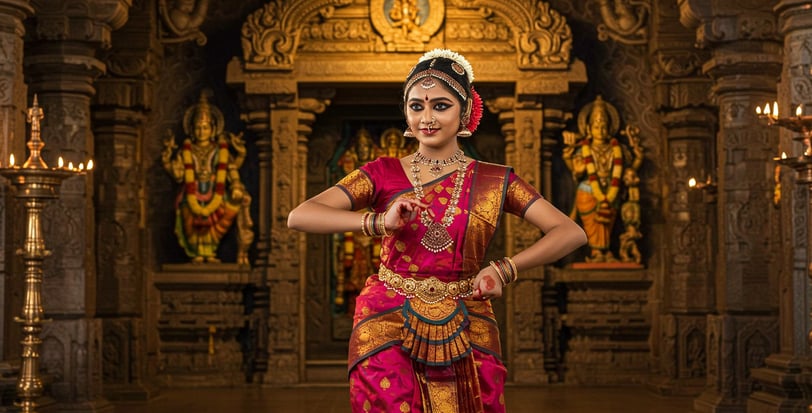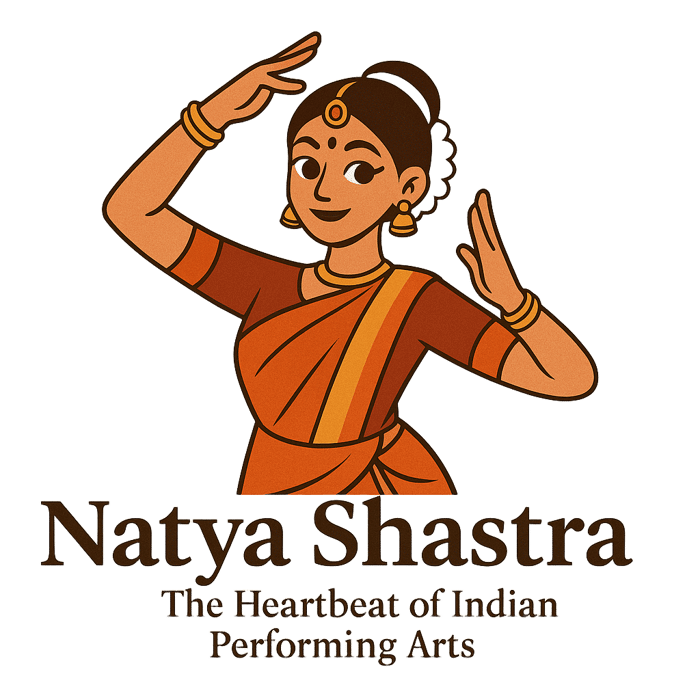Exploring the Rich Depths of Nāṭya Śāstra in Indian Performing Arts
Delve into the Nāṭya Śāstra, an ancient Sanskrit treatise by Bharata Muni. This foundational text intricately covers dance, drama, and music, providing essential insights into composition, stage design, and acting techniques, making it indispensable for understanding Indian performing arts and their profound cultural significance.
5/8/20242 min read


🎭 Exploring the Rich Depths of Nāṭya Śāstra in Indian Performing Arts
Step into the timeless world of Indian aesthetics through the lens of the Nāṭya Śāstra—an ancient Sanskrit masterpiece that continues to shape and inspire the fabric of India’s performing arts. Attributed to the sage Bharata Muni, this monumental work is not just a literary relic of the past; it is a living tradition, a foundational text that provides enduring wisdom and structure to the artistic expressions of dance, drama, and music.
🕉️ A Sacred Manual of Artistic Expression
Composed over two millennia ago, the Nāṭya Śāstra is regarded as the fifth Veda by many, created to make the deeper philosophical and moral teachings of the sacred texts accessible to all—through the universal language of performance. This treatise does not simply document artistic practices; it theorizes, codifies, and spiritualizes them, turning every gesture and sound into a tool of emotional and intellectual transformation.
🩰 Dance, Drama, and Music: An Integrated Vision
Bharata Muni presents the performing arts as an interconnected whole. According to the Nāṭya Śāstra:
Dance (Nṛtta and Nṛtya) is not just movement, but a stylized language that communicates emotion and meaning.
Drama (Nāṭya) is a mirror to life, depicting the struggles, joys, and inner conflicts of human beings.
Music (Sāṅgīta) enhances both dance and drama, amplifying the emotional resonance and bringing the performance to life.
Through these three pillars, the text constructs a complete and immersive sensory experience, aiming not just to entertain, but to elevate the consciousness of the audience.
🎨 Artistry in Detail: From Stage to Spirit
The Nāṭya Śāstra is striking in its attention to detail. It offers in-depth guidance on:
Dramatic structure: Including plot types, character development, and emotional pacing
Stage design: Layouts for open-air and indoor theaters, seating arrangements, and acoustics
Acting techniques: Facial expressions, gestures (mudrās), postures (sthānas), and movement styles
Makeup and costumes: Symbolism of colors, attire for different characters, and visual storytelling
Musical components: Descriptions of instruments, vocal styles, rhythmic cycles (tāla), and melodic modes (rāga)
Every aspect of performance is addressed with a goal to create a holistic and harmonious aesthetic experience.
💫 Rasa: The Heart of the Experience
At the core of the Nāṭya Śāstra lies the celebrated Rasa Theory—the idea that the purpose of performance is to evoke rasa, or emotional essence, in the hearts of the audience. These include:
Śṛṅgāra (Love),
Vīra (Heroism),
Karuna (Compassion),
Raudra (Anger),
and others—each with its own gestures, expressions, and musical moods.
A successful performance, according to Bharata, is one where the audience feels deeply—where art becomes an emotional, even spiritual, experience.
📚 Cultural Significance That Transcends Time
The Nāṭya Śāstra is not only a technical guide; it is a philosophical and cultural treasure. It reflects a worldview in which art is not separate from life, but a vital expression of dharma (cosmic order), morality, and human emotion.
Today, its influence is seen across the Indian subcontinent in:
Classical dance forms like Bharatanatyam, Kathak, Kuchipudi, and Odissi
Theater traditions from Sanskrit drama to modern Indian plays
Classical music and temple performances
Artistic training and education in gurukulas and academies
The Nāṭya Śāstra continues to guide students, performers, scholars, and spiritual seekers in their journey to master the expressive power of Indian art.
✨ Conclusion: A Living Tradition
To explore the Nāṭya Śāstra is to dive into the very soul of Indian culture—a blend of precision, beauty, and spiritual depth. Whether you are an artist or an admirer, understanding this text opens the door to the timeless wisdom and artistry that has shaped India’s cultural identity for centuries.
